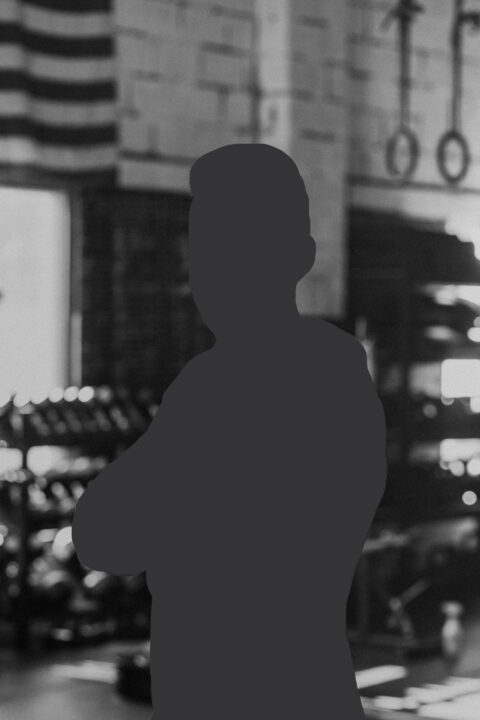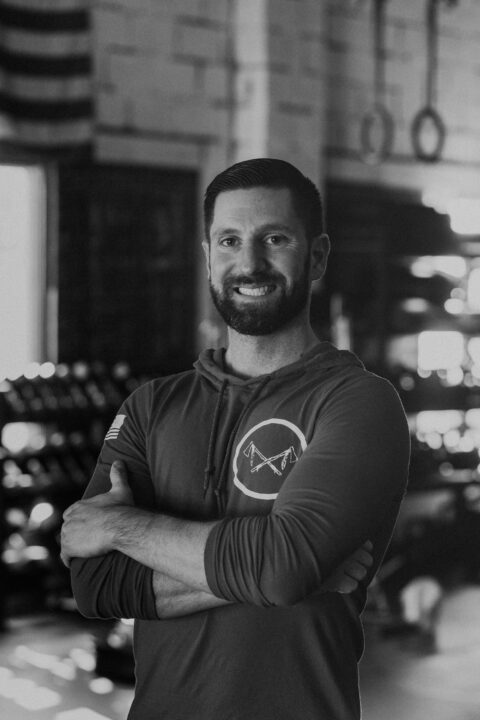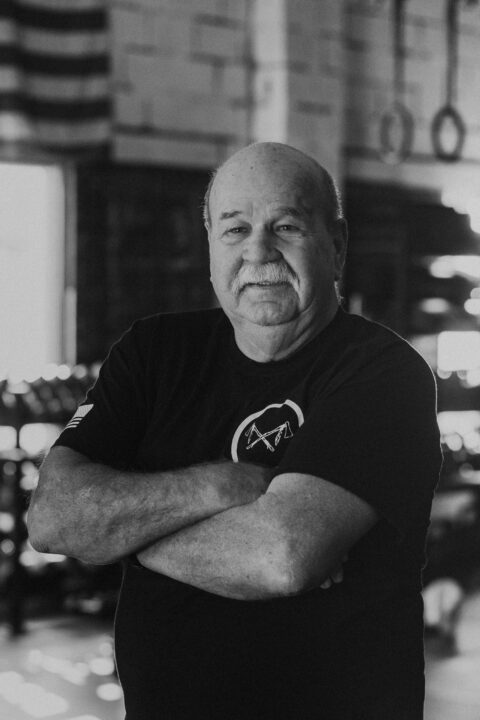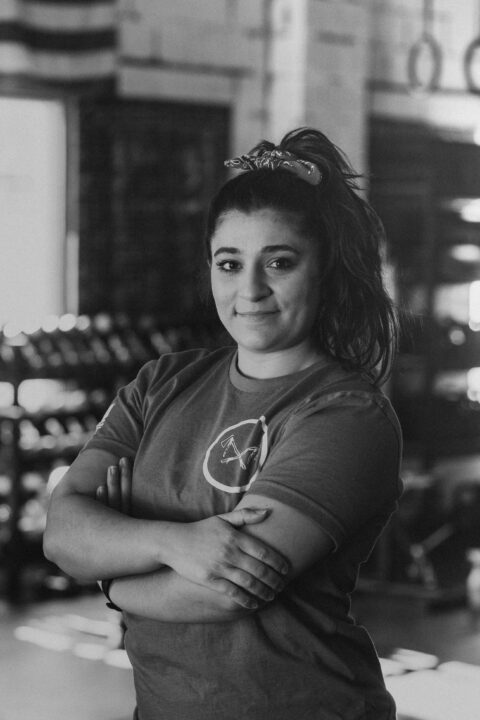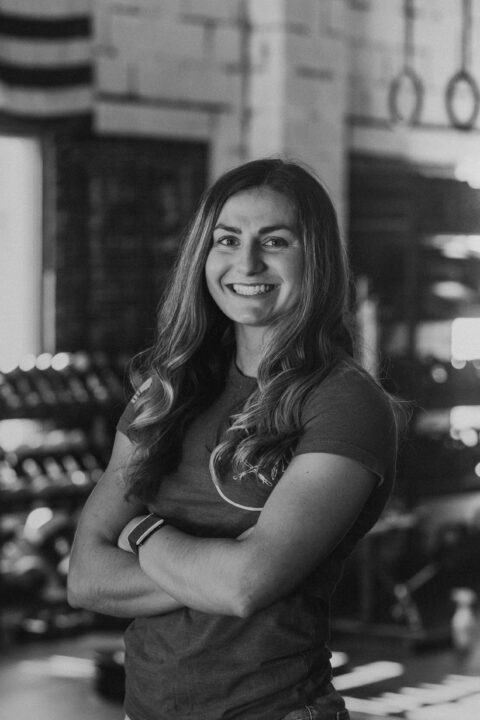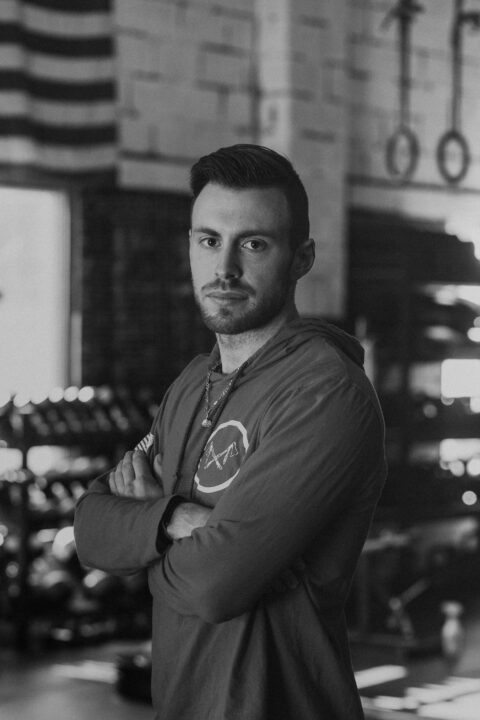Finding the Inner Athlete
By Hilary Achauer
Kathy Aldridge, 45, still remembers that moment in ninth-grade P.E. when the teacher weighed and measured everyone in front of the whole class.
At age 15, Aldridge was 5 foot 9 and 150 lb.
“I thought I was obese,” Aldridge said, “because all my friends were like these little short 100-pound little people and I was just big.”
Such moments sink into your bones.
We get sorted into categories when we’re young, and over time those categories can become prisons. If you don’t get labeled “athlete” early on, it’s easy to throw up your hands and think “that door has closed” and move on. Soon, the idea of being athletic seems as impossible as learning to fly.
CrossFit is helping to change that.
In the early days, CrossFit attracted ex-athletes and military personnel who were often looking to replicate the intensity and camaraderie they’d found as part of a team. CrossFit Founder Greg Glassman’s original gym included many people who hadn’t served in the military or played sports, but servicepeople and lifelong athletes were certainly prominent in the category of “early adopters.”
Today, CrossFit gyms are even more diverse as more people around the world learn that anyone can use the program to improve health and fitness. CrossFit has no prerequisites—nor does it have limits. People walk through the roll-up doors of a CrossFit gym thinking they aren’t athletic only to discover they are mistaken about lifelong definitions of self.
It’s so much more than getting into shape. It’s a fundamental shift of perspective. By encouraging people to push their athletic boundaries in a supportive environment, CrossFit often leads people to think, “If I can do this, what else can I do?”
Aldridge thought she knew who she was by 43, and then she discovered CrossFit. She’d exercised before, but this was something completely new.
And it changed her life.
It Began With Burpees
Kathy Aldridge before and after CrossFit. (Courtesy of Kathy Aldridge)
Aldridge was always active growing up. She played backyard basketball with her brothers but never seriously participated in organized sports. The first time she set foot in a gym was in college, when weight loss was her sole purpose for walking on the treadmill and working through the weight-machine circuit.
After college, Aldridge got married and had children—she’s a mom of three kids ages 13, 15 and 17. For years her primary exercise was a daily hour-long walk at 5 a.m. with a friend.
That was fine when the kids were little, but as they got older she realized she wanted something more. She wasn’t yet 40, but she was gaining weight and her energy levels started to drop. People told her that’s just what happens, but something inside Aldridge knew that wasn’t right.
“I wasn’t happy with that. That wasn’t how I wanted my life to go. I wanted to fight that as much as possible,” she said.
When she was 39, Aldridge joined a Gold’s Gym. She hired a personal trainer and picked up a barbell for the first time in her life. It was fun for a while, but after a few years she got bored—she was doing the same thing every day in the gym.
Then she spotted the CrossFit people.
An affiliate had started up inside the Gold’s Gym, CrossFit AGX Roanoke. Aldridge had heard of CrossFit—some of her friends did it—but she always thought it was for athletes, not people like her. She’d never even heard of half the stuff they did in CrossFit.
“I really can’t do that,” she thought to herself, watching the CrossFit class do pull-ups and squats from across the gym.
A man working the front desk at Gold’s Gym saw her interest and convinced Aldridge to give it a try, so in 2015 she walked over to the CrossFit class and stood in front of the whiteboard. It was confusing. The only movement she recognized was burpees. She’d never done one before, but she definitely knew what they were.
There were a lot of burpees that day.
“At the end of that class I was like, ‘Oh my gosh, I think I might die,’ but at the same time, (I thought,) ‘Look at what I just did,’” Aldridge said.
That feeling of exhausted pride is familiar to any CrossFit athlete.
“That was the feeling that really got me hooked,” Aldridge said, “(the feeling) that I could do something I never thought that I would ever be able to do.”
For about a year Aldridge went to CrossFit three days a week. Her coach Ryan Robertson said she sometimes missed one of those days when she had a conflict.
“Her movement and range of motion were limited and she didn’t have that ‘fire’ inside her,” Robertson said.
Then, in 2016, Robertson moved the affiliate to a new location, CrossFit Unify Roanoke. That’s when things changed for Aldridge.
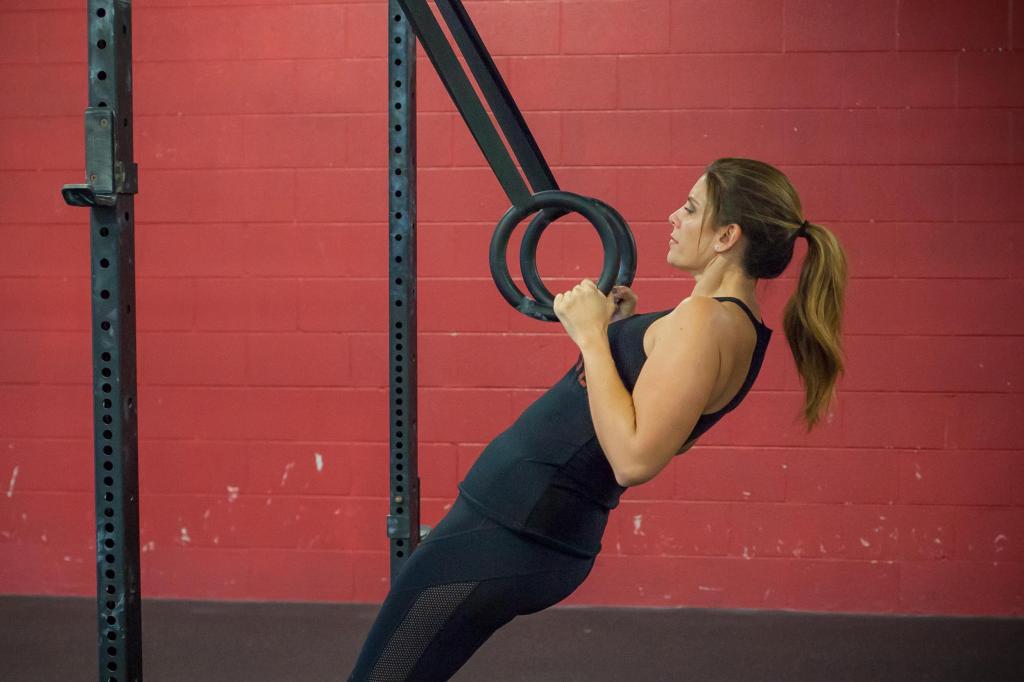 Aldridge started doing CrossFit in a globo gym, and progress improved when she started training more regularly and paying more attention to her diet. (Regina Lograsso Photography)
Aldridge started doing CrossFit in a globo gym, and progress improved when she started training more regularly and paying more attention to her diet. (Regina Lograsso Photography)
Finding the Fire
Aldridge started attending class five days a week. She paid more attention to her nutrition.
“I really started noticing the changes coming,” she said, “I had more endurance and more strength, and I was getting the more complicated lifts like the snatch.”
Robertson said the transformation was remarkable.
“Now, her movement is worlds better than it was two years ago,” he said. “She squats to full depth, moves with purpose and truly trains like an athlete.”
Running was always a struggle for Aldridge, and she clearly remembers the first time she ran 800 m in a workout without stopping.
“After I realized I could do it one time, I ended up doing it three times (in the workokut),” she said.
“That proved to me that so much of what I think I can’t do is really just in my head. And I think that’s the great thing about CrossFit is it really forces you to find a strength and endurance you didn’t know you had,” she said.
Aldridge has plans for a 5-km run with her daughter’s basketball team—something she never would have done before CrossFit.
Her love of CrossFit is so infectious her whole family has joined in. Aldridge wants her kids to learn what she never did: You can be an athlete even if you don’t play sports on a team.
“I want them to have confidence in themselves to try these things,” Aldridge said, “and I want them to see the value of fitness and strength and exercise at a young age.”
Now Aldridge’s friends look at her and say, “I just can’t believe you do CrossFit. I just don’t know how you do that. I could never do that.”
Aldridge said she hears that a lot. When she does, she always thinks, “If I can do this, I promise you, you can, too. Everybody starts somewhere.”
A New Challenge
Yori Rubinson, now 42, skipped third grade and graduated from high school when he was 16.
“When I was in high school I was really into math—I guess you could say I was a ‘mathlete,’” Rubinson said.
He grew up in Skokie, Illinois, a suburb of Chicago. He played in the park and was on a Little League team for a year, but his focus was always academics.
“Between school, (and) I was in band, and I was working part-time, that kind of ate up all my time,” he said.
He started at the University of Illinois at Urbana–Champaign when he was 17, earning two degrees in four years. After school, Rubinson began working as an actuary. When he was 27, he went back to school and earned an MBA.
“I would work all day and study at night, so I just kind of developed a sedentary life,” Rubinson said. He got married and had kids, and for years he never did anything more strenuous than walking.
Then in 2014 things changed. Rubinson and his wife were in the process of separating. Right around that time he bought a bicycle, with hope of getting some exercise.
“I hadn’t biked since I was a kid,” Rubinson said, “and I was trying to learn how to bike. I was biking 5 to 10 miles, and it was really exhausting to me to bike at all,” he said.
That’s when he realized how out of shape he’d become. He knew something needed to change. Rubinson’s sister, who’d been doing CrossFit for about four years, suggested he try the program.
In July 2014, Rubinson tried a class at CrossFit RPE in Deerfield, Illinois.
“They walked me through something for an hour and I did a seven minutes of maybe like burpees and wall balls, and it just like demolished me. (It was) absolutely horrible,” Rubinson said.
Horrible—but intriguing.
Rubinson went back and signed up for an on-ramp course: four one-on-one sessions. After his fourth session, the coach told Rubinson he’d give him a fifth session for free because Rubinson was having trouble picking up some of the movements.
“It took a long time to get the fundamentals like a squat with a PVC pipe and things like that. … Like jumping ropes, I’d never jumped ropes before that I can remember,” Rubinson said.
Alex Carlson, the head coach at CrossFit RPE, remembers one of those sessions.
“When I taught him how to deadlift, it took, like, 40 minutes to get him into a good position,” Carlson said.
Rubinson’s athleticism was underdeveloped, but he’d been developing another asset since elementary school: the ability to do hard work.
“It was just a challenge,” Rubinson said, “but for whatever reason I just decided to stick with it.”
Rubinson before and after CrossFit.
(Both: Courtesy of Yori Rubinson)
Hard Work and Results
Rubinson kept showing up at CrossFit RPE, settling into a four- or five-days-a-week workout routine. Soon he was squatting with weight on the bar. Then he did a pull-up. Now, more than three years later, he can bench 225 lb., deadlift 450 lb. and clean 250 lb. He’s moved on from pull-ups to bar muscle-ups and handstand push-ups.
Carlson said Rubinson’s success comes from his willingness to put in the work day after day.
“He has the work ethic of an athlete,” Carlson said. “He shows up and does his very best. Some days are great, and some days you can see the frustration on his face, but he always shows up the next day.”
Though Rubinson struggled with it initially, the deadlift is now one of his best lifts.
The former “mathlete” found CrossFit was also good for his mental health.
“When you are going through a separation and then a divorce, it takes a toll,” Rubinson said.
Things were difficult at home, but at CrossFit he was doing things he hadn’t ever done before, things he didn’t even know were possible. That helped.
“It feels really, really good,” Rubinson said, “It’s a really good feeling to say, ‘Holy cow, I can do a pull-up,’” he said.
Discovering his athletic side changed how Rubinson behaved outside the gym, too. He was never much of a swimmer and doesn’t like to run, but he signed up for a sprint triathlon in 2017 with his sister and cousin. On a recent vacation in Tennessee he participated in a 40-mile bike race up a mountain.
“I didn’t get the best time and I didn’t get the worst time (on the bike race), but it was like the first time I’d ever done anything like that, biking up a mountain, biking in altitude, and it felt absolutely fine,” he said.
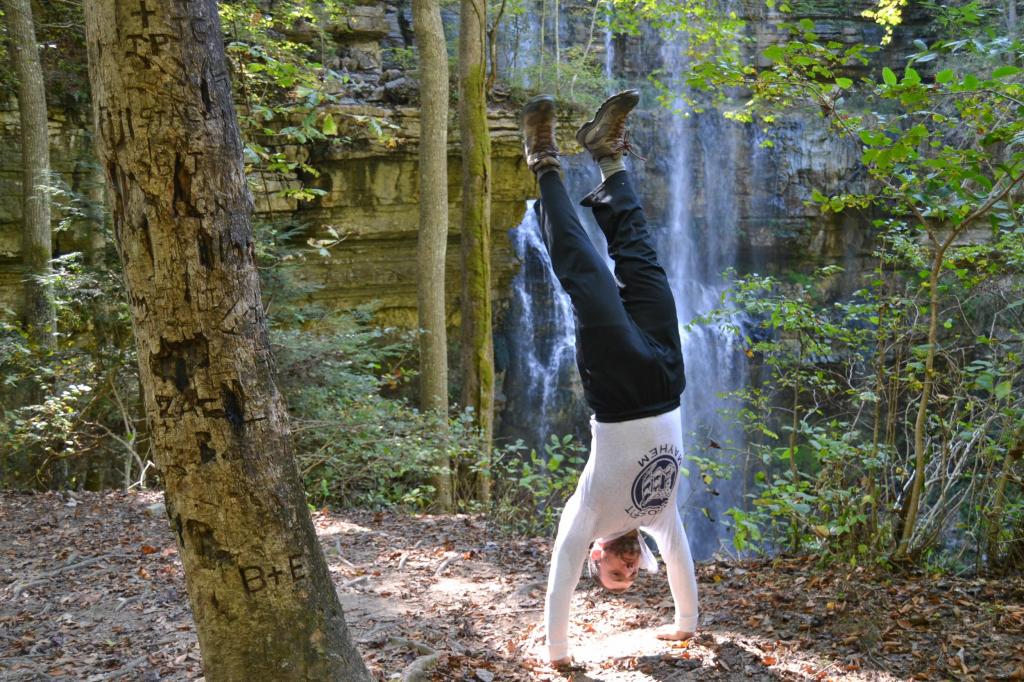 Rubinson is now setting a positive example for his children, one of whom already trains with dad when he can. (Courtesy of Yori Rubinson)
Rubinson is now setting a positive example for his children, one of whom already trains with dad when he can. (Courtesy of Yori Rubinson)
Now that he’s dating again, Rubinson said he appreciates the physical and mental confidence he’s discovered through CrossFit.
“It’s nice to feel confident and comfortable with how you present yourself. It’s very different than anything I’d ever experienced before,” he said.
Rubinson’s sons, ages 9 and 6, only really know him as someone who is very fit. His 9-year-old does workouts with him on the weekend, using a PVC pipe instead of a barbell and ring rows instead of pull-ups.
“We are working together and he is having a blast. There’s nothing that’s better for me in life than this,” Rubinson said.
“If I could go back in time, (I would tell myself), ‘You have to do this. You have to do this.’ I would never believe myself that it would be the way that it is. You think, ‘Oh it’s a team or it’s a competition,’ but it’s really none of those things,” he said.
Rubinson compares CrossFit to something he knows well.
“You have a coach … who wants you to do better,” he said, “and you just improve and you slowly get better over time. It’s almost like going to college or school.”
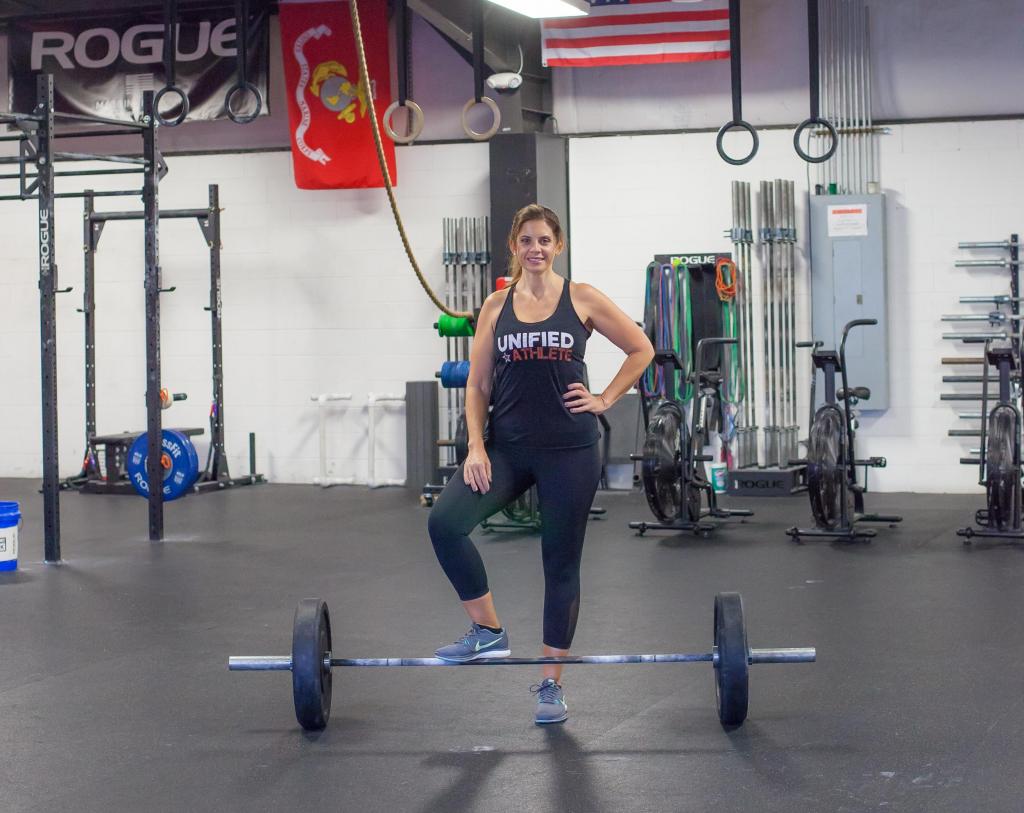 Kathy Aldridge, athlete. (Regina Lograsso Photography)
Kathy Aldridge, athlete. (Regina Lograsso Photography)
Show up and Shine
If you do nothing to change it, the story of who you are and what you’re capable of is reinforced every year. It takes courage to change.
Even after all she’s done in two and a half years of CrossFit, Aldridge still struggles to think of herself as an athlete.
“I don’t have a background as an athlete,” Aldridge said, “but I guess I am! I look at the stuff we do, and it’s … pretty impressive that a 45-year-old mom of three teenagers can go do this every day. I wish I had found this when I was younger, but I didn’t, so this is my story. I’m hoping to change that for the next generation in my family,” she said.
For Rubinson, he found all he had to do was show up and not quit, even when it got hard and he wasn’t sure he could go on.
“I honestly couldn’t tell you why I keep sticking with it. It certainly doesn’t get easier. I would be lying to say that. But I just do, and I like the results,” he said.
A 61-year-old friend of Aldridge’s from CrossFit tells her to do something every day that’s out of her comfort zone. On the day we talked, Aldridge was preparing to do just that:
Her friend had invited her to go Italy at the last minute, and instead of saying no, she was packing her bags.
About the Author: Hilary Achauer is a freelance writer and editor specializing in health and wellness content. In addition to writing articles, online content, blogs and newsletters, Hilary writes for the CrossFit Journal. To contact her, visit hilaryachauer.com.
Cover image: Regina Lograsso Photography




